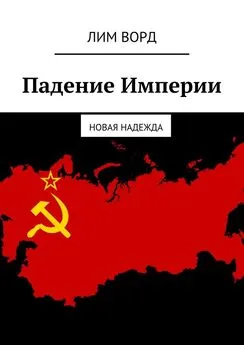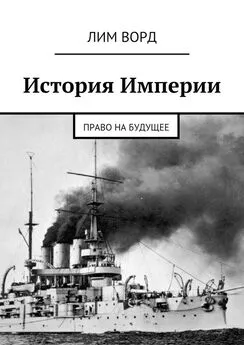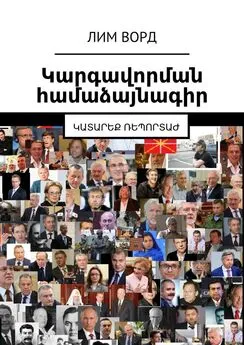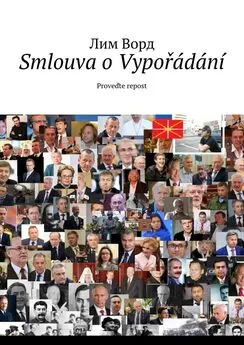Лим Ворд - Библия Времени. Найди свое
- Название:Библия Времени. Найди свое
- Автор:
- Жанр:
- Издательство:неизвестно
- Год:неизвестен
- ISBN:9785449318695
- Рейтинг:
- Избранное:Добавить в избранное
-
Отзывы:
-
Ваша оценка:
Лим Ворд - Библия Времени. Найди свое краткое содержание
Библия Времени. Найди свое - читать онлайн бесплатно ознакомительный отрывок
Интервал:
Закладка:
…To strengthen the administrative apparatus, the government of Catherine II disaggregates the province – instead of the 23 centers of power they become 56 (governors, gubernias, the essence of synonyms). Accordingly, the bureaucracy, the power block, doubles, and the costs for them are increased four and a half times.
As a result of the uprising, the situation of serf factory workers improves somewhat, but there are no conclusions about the allowances for the entire peasantry. And, this decision of the government, leads, in the first half of the twentieth century, to the collapse of the state and the physical destruction of the Russian nobility.
Many prominent enlighteners, generals, statesmen are united by Masonic lodges. Catherine initially is loyal to them, but after the French Revolution, organized, in many ways, by this community, radically changes its position. The Empress expels from the country, removes from the people (publisher Novikov, etc.) people for mere involvement in Freemasonry.
A year before the start of the Pugachev uprising, in 1772, the First Section of the Polish-Lithuanian Commonwealth took place. The Polish Saeima abuses liberum veto, the principle of declaring a ban on the discussion of the resolution by at least one dissenting party. The Russian Ambassador Repnin worked well on creating the pro-Russian stratum. The King of Poland, Stanislav Ponyatovsky, in the past – the lover of Catherine, her protege on the throne treats Russia fairly friendly, but he and his followers can no longer manage anything. The country is divided into many small «sejmics», enters a civil war even before centralized states pay attention to it. So, according to mutual agreement, contingents of Prussia, Austria and Russia join Poland. The troops of AV Suvorov occupy the ancient capital of this country, covered with mysticism Krakow, as well as part of the current Baltic and Byelorussian (Polotsk, Mogilev gubernias, six years later transformed into one Belarusian province). Actually, Prussia inherits the present West Prussia. Austria receives Galicia, without Krakow, Lviv and a number of adjoining lands. Further allies occupy Warsaw, and demand from the Diet to ratify legality of an event. For the quickest decision-making, the principle «Liberalum vito» is canceled, and most say «yes.»
A threateningly large, little less than the current EU, while internally unstable and contradictory, the Rzeczpospolita is now shrinking to a reasonable level.
In 1775, according to the decree of Catherine, finally eliminated (New, near the former Chertomlykskaya, from the 50-ies of the twentieth century on the bottom of the Kakhovka water reservoir) Zaporizhzhya Sich. Turkey is quiet, it is necessary to establish friendly relations with Poland. On the night of June 5, 50 assembled cavalry regiments approach the Novaya Sich, Don Cossacks, Hungarians, Wallachians, and up to 10,000 infantry. Kozaki, after discussions, accept an ultimatum and leave the fortress. After this, the fortifications are destroyed by artillery fire. Some of the Cossacks go to the Crimean Khanate (under the protectorate of Russia, but fairly independent), then to Turkey, to serve the Ottomans (Transdanubian Sich). Some remain in the service of Russia, the sergeant-major receive the nobility, the lower ranks, if they are able to withstand discipline, join the dragoon and hussar regiments, and the irregular «Army of faithful Zaporozhets» settles on the left bank of the Kuban.
The army Zaporizhzhya is colorful, covered with legends, but only in about 70% of cases it is loyal to Russia and actively supports it, while in 30% it opposes, or is relatively neutral. Separate detachments are not connected with hierarchy, reporting with a stable state center, therefore they allow unjustified cruelty when conducting military operations (and even in peacetime, with their own population, to recall even the popular song «Galya the Young»). About this artistically narrates N. Gogol in a famous work, Polish sources (Henryk Sienkiewicz, «Fire and sword») and, of course, the chief Kobzar, Taras Shevchenko (in particular, the poem «Gaydamaky»):
Uman lit
Neither in the house nor in the chapel
Nowhere is left
Everything fell.
…Haydamaky
The walls were broken down, —
Destroyed about stones
The priests were smashed
And schoolchildren in the well
Live buried.
Until the night, the foxes fisted;
…There is no soul left.
Blood me, blood!
Noble blood, because I want to drink!
In a calm environment, not on nerves, after reading the reports on the actions of his subordinates in the capture of some fiercely resisting city, the monarch is quite capable of severely punishing the commander who committed excesses with the civilian population. If only he is not Peter the First, although then it is possible. Well, and «their» guys «their», in a small free squad, are usually strictly not judged.
In 1777, the son of Alexander, the beloved grandson of Catherine II, was born to the heir to the throne, (23-year-old) Paul and German (divided into dozens of kingdoms and dynasties by Germany – the «breeding economy» of princesses for Europe) of Sofia-Dorothea of Württemberg.
On April 8, 1783, after two campaigns of Russian troops to the Crimea, in order to support the Russian protégé (the last raid was conducted by A. Suvorov), Catherine issued a manifesto on the annexation of the peninsula, and also the Kuban to the Russian Empire. All this together is now called Tavrida. The last khan, Shahin-Geray, a man of the European mindset, although the spender and despot, who could not build communication with the Russian authorities and the Crimean Tatar population, renounced the throne. Later, with a content of 200,000 rubles (a lot), he lives in Kaluga, asks the Russian government and Porto to return to their homeland. There, in the fortress of the island of Rhodes, the Ottoman authorities execute him and execute him. Thus, fallen out of the Old Russian state in 1223 after the attack of the troops of the Golden Horde (ulus Dzhuchi), Crimea again becomes Russian.
August 4, 1783 Eastern Georgia passes under the protectorate of Russia. St. George’s treatise does not provide for the entry of the kingdom into the Empire, and therefore, the defense by all means and means (although such a point is noted). The construction of the Military-Georgian road, and the Vladikavkaz fortress that covers it, begins. In 1787, for some ulterior reasons, Russia withdraws its troops, two battalions. Georgia will be further struck by the Dagestani Ummah Khan and the Persian shah Agha-Mohammed, before the document signed by Pavel the First and the strong Russian garrison, will give her lands a long-awaited peace.
In 1787, in the summer, with a three-thousand suite, in the company of Potemkin and representatives of foreign missions, the empress goes to the Tauride voyage across Novorossia and the Crimea. The procession takes place, in particular, Kiev, Kherson, Bakhchisarai, Sevastopol, Sudak, Stary Krym, Feodosia, Mariupol and Azov.
This fashion show did not go unnoticed in the Port, there is a revanchist mood. Sultan puts forward a note on Russia’s refusal from the Crimea. The Russian envoy, in turn, passes a demand to Turkey to stop the attacks on the borders of Georgia. In the end, the diplomat is put in the Seven-door castle, which means in fact, the beginning of the war. The fighting begins in August 1787.
By that time, Russia was already preoccupied with the creation of a military alliance with Austria. The troops of Suvorov and Potemkin besiege Ochakov. The commander-in-chief is procrastinating, he strengthens the siege buildings, referring to the care of people, however, it comes to winter, and the forays of the Turks bring tangible losses. We have to accept Suvorov’s plan – a decisive assault. The attack, from different directions, with six columns, must be conducted at 20-degree frost. Ochakov was taken and, on the orders of Potemkin, completely destroyed. Then the action moves to the territory of modern Romania (the river Rymnik), where Suvorov, also commanding Austrian troops, inflicts a number of serious defeats to Porte. Austria itself, who achieved the liberation of Belgrade, but also experienced the bitterness of defeat in several battles, after the change of emperors, leaves the war. In December 1790, Suvorov begins the assault on Ismail, who represents, according to him, «Fortress without weaknesses.» The forces of the parties: the Russian troops 31 thousand people, 600 guns, the Turkish garrison – 35 thousand people, with 260 guns, plus 10-meter walls of the fortress and moat. After two days of artillery preparation, at three o’clock in the morning, on the signal rocket, the columns storm fortifications. The night turns into a day, fifteen hundred horses, breaking out of burning stables, intensify confusion. To retreat to the Ottomans is impossible: the Sultan defined the execution as the only punishment for those who leave the fortress. The cannon fire of 20 cannons supporting the infantry cleans the streets, but every house has to be taken with a fight. Suvorov throws into action the huntsmen, who, acting mercilessly, with bayonets alone, complete the rout by four days.
Losses of the parties: Porta – 26 thousand people, 8 thousand prisoners, Russian empire 4,600 people. The corpses of Turkish soldiers have to be thrown into the Danube, since it is impossible to work earthworks in winter on such a scale.
According to the Treaty of Yaslav, Izmail returns to Turkey.
On the Black Sea, the Russian fleet disrupts the plans of the Turkish command to land troops in the Crimea (the battle in the Kerch Strait). The new Sultan Selim III can not approach the signing of the peace with at least one victory. The Treaty of Ias is concluded on January 9, 1791. After Russia, the Crimea, the Northern Black Sea Coast, and some other lands are assigned; they are based Odessa, Grigoriopol, Tiraspol. New lands – the Black Sea Region, Volgograd, as well as Volhynia, are inhabited by about 200 thousand ethnic Russians, who do not pay taxes at all, who are invited by Catherine.
In addition, Turkey refuses hostile actions against Georgia. Once formidable, Porta now evokes sympathy, the Russian ambassador, under his responsibility, strikes out of the peace treaty an item on a large, 7 million rubles, monetary indemnity.
Catherine’s dreams – the creation of New Byzantium, the continuation of Russia in the conquered Ottoman Empire, do not come true because of the position of the French, who in the East are already in a privileged position (the Union of the Lily and the Crescent), and the British, who do not want to violate the existing balance of power.
…Using the diversion of Russian forces to Turkey, Sweden (King Gustav III) is once again trying to recover the lost lands, and, June 21, 1788, begins fighting. The main idea is the landing of 20,000 troops in St. Petersburg, from where it is most convenient to dictate the terms of peace. The balance of forces: the Swedish army of 30 thousand, the Russian army, recruited urgently from local recruits – 14 thousand. On land, Swedes do not achieve success and retreat to their limits. Fighting takes place at sea; Fortunately, the whole Russian fleet has not yet gone to the Dardanelles. The Russian naval commander is the famous V. Ya. Chichagov, however, the Swedes have an advantage in the number of guns and warships. Battles are followed: the Gogland, the no man’s, the Eland – the Swedes retreat, the Rochensalme – the Russians are deprived of 2 ships, the Swedes 39, including the admiral frigate. In the Vyborg battle of 1790, Sweden loses 67 rowing ships and bids farewell to the dream of landing in St. Petersburg. But, on July 9, 1790, Gustav the Third receives an active long-awaited victory and approaches the signing of peace while retaining his face; In the Second Battle of Rocensalm, the Russian fleet is losing 52 warships, against 5 Swedish ships.
Читать дальшеИнтервал:
Закладка:










